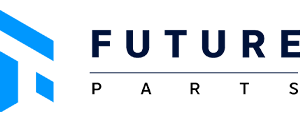Email format error
Email cannot be empty
Email already exists
6-20 characters(letters plus numbers only)
The password is inconsistent
Email format error
Email cannot be empty
Email does not exist
6-20 characters(letters plus numbers only)
The password is inconsistent


DMLS vs. SLM: 3D Printing for Metal Manufacturing
In the realm of metal 3D printing, Direct Metal Laser Sintering (DMLS) and Selective Laser Melting (SLM) stand out as two prominent technologies. Both offer unique advantages and are widely used in various industries, from aerospace to medical devices. But how do these technologies compare, and which one is better suited for specific applications? In this blog, we’ll explore the differences between DMLS and SLM 3D printing for metal manufacturing, providing a comprehensive overview of each process.
Understanding the Basics
DMLS (Direct Metal Laser Sintering)
DMLS is a powder bed fusion process that uses a laser to sinter powdered metal, binding the particles together to form a solid structure. It doesn’t melt the metal completely but fuses the particles at a molecular level. This technique is particularly useful for metals that are challenging to melt, like titanium alloys.
SLM (Selective Laser Melting)
SLM, on the other hand, fully melts the metal powder using a high-powered laser, creating a more homogeneous and dense final product. This process is suitable for materials that can be fully melted and solidified, such as stainless steel and aluminum.
Key Differences
1. Material Compatibility
One of the primary differences between DMLS and SLM is the range of materials they can process. DMLS is versatile and can handle a wider variety of metal alloys, including those that are difficult to melt. SLM, while also compatible with a range of metals, is particularly suited for metals that benefit from full melting to achieve better mechanical properties.
2. Surface Finish and Detail
SLM tends to produce parts with a finer surface finish and higher resolution due to the complete melting process. The fully melted layers fuse seamlessly, resulting in a smoother finish. DMLS, while still capable of producing high-quality parts, might require additional post-processing to achieve a similar surface finish.
3. Mechanical Properties
The mechanical properties of parts produced by SLM are generally superior due to the homogeneous melting and solidification process. This results in parts with higher strength and better load-bearing capabilities. DMLS parts, while strong, might not achieve the same level of uniformity and mechanical properties as those produced by SLM.
4. Production Speed
DMLS can be faster than SLM because it doesn’t require the complete melting of the metal powder. This can be advantageous for producing prototypes or parts where speed is more critical than ultimate strength or finish.
5. Application Suitability
Choosing between DMLS and SLM often depends on the specific application and desired properties of the final product. For instance, aerospace and medical industries, where part integrity and mechanical properties are paramount, might prefer SLM. Conversely, industries focusing on rapid prototyping or less critical components might lean towards DMLS due to its faster production times and material flexibility.

Real-World Applications
Aerospace Industry
In aerospace, the strength-to-weight ratio is crucial. SLM’s ability to produce dense, high-strength parts makes it ideal for components like engine parts and structural elements. The technology’s capability to work with high-performance metals such as titanium and aluminum further adds to its appeal.
Medical Industry
The medical industry benefits from both DMLS and SLM, depending on the application. For instance, customized implants and prosthetics, which require precise mechanical properties and biocompatibility, often use SLM. On the other hand, surgical tools and prototypes may utilize DMLS due to its speed and flexibility with different metal alloys.
Automotive Industry
In the automotive sector, both technologies find use. SLM is used for high-performance components that need to withstand significant stress and temperature variations, like engine parts. DMLS, with its faster production capabilities, is suitable for producing prototypes and parts for testing and validation.
The Future of Metal 3D Printing
The future of metal 3D printing lies in the continuous improvement and integration of DMLS and SLM technologies. Innovations in laser technology, material science, and printing techniques are set to enhance the capabilities and applications of both processes.
Hybrid Approaches
One promising trend is the hybrid approach, combining the strengths of both DMLS and SLM. By integrating the fast production capabilities of DMLS with the superior mechanical properties of SLM, manufacturers can achieve the best of both worlds, optimizing for both speed and quality.
Material Advancements
Advancements in metal powders and alloy development will further expand the range of applications for both DMLS and SLM. New materials that are easier to print and offer enhanced properties will make metal 3D printing even more versatile and accessible.
Automation and Scalability
As automation technologies improve, the scalability of both DMLS and SLM will increase, making large-scale production more feasible and cost-effective. This will enable industries to adopt metal 3D printing for a broader range of applications, from mass customization to complex, large-scale components.
Conclusion
In conclusion, both DMLS and SLM offer significant advantages for metal manufacturing, each with its own set of strengths. The choice between the two depends on the specific requirements of the application, including material compatibility, mechanical properties, production speed, and surface finish. As technology advances, the gap between DMLS and SLM will continue to narrow, offering even more possibilities for innovation in metal 3D printing. Whether you are in aerospace, medical, or automotive industries, understanding the nuances of these technologies will help you make informed decisions and leverage the full potential of metal 3D printing for your manufacturing needs.

